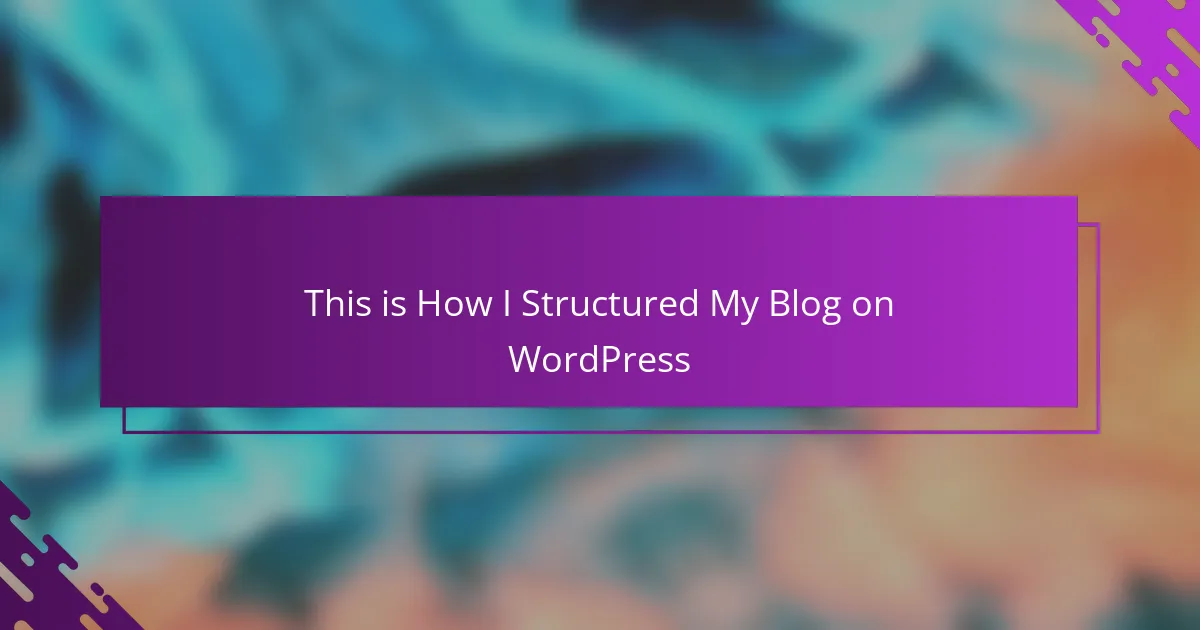Key takeaways
- Personal blogging is about expressing your authentic voice and maintaining a clear structure to connect with your audience effectively.
- Choosing the right blogging platform, like WordPress, can enhance creativity and ease of use, allowing you to focus on content creation.
- Organizing blog categories and tags thoughtfully improves reader navigation and reflects your growth as a writer.
- Consistently creating engaging content and maintaining a blogging schedule fosters deeper connections with readers and ensures ongoing motivation.
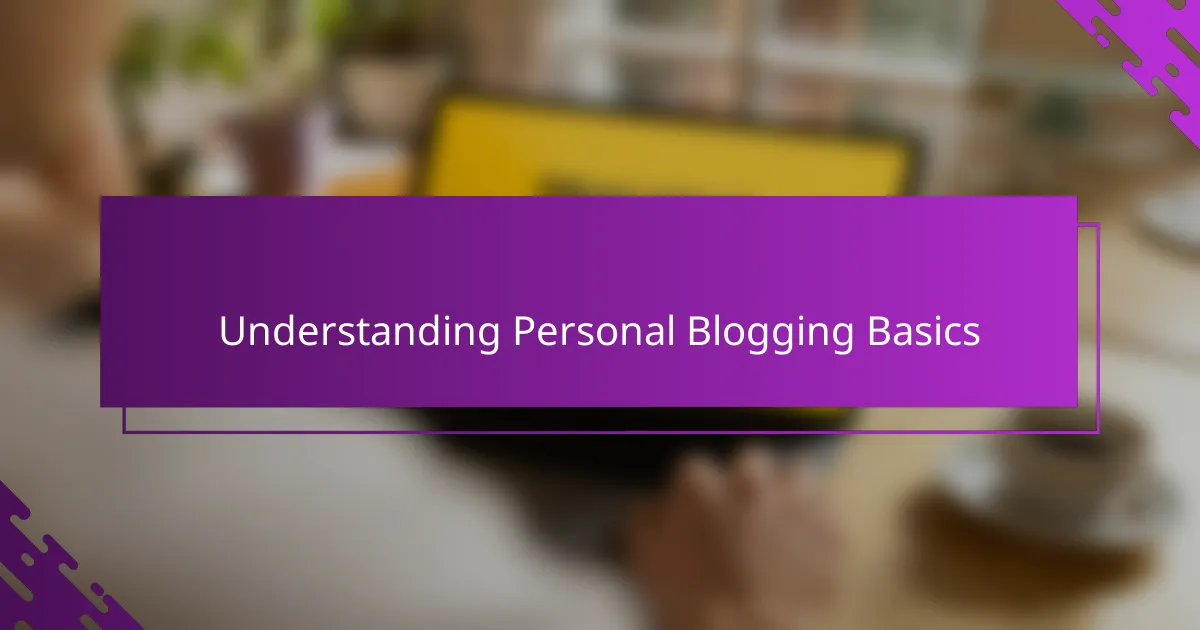
Understanding Personal Blogging Basics
Personal blogging, from my experience, is more than just sharing daily events—it’s about creating a space that truly reflects who you are. Have you ever wondered why some blogs feel so inviting? I think it’s because they’re built around the blogger’s genuine voice and clear purpose.
When I first started, I underestimated the power of simplicity. Keeping my content focused and my design uncluttered made it easier for readers to connect with my stories. Don’t you find it frustrating when a blog feels overwhelming or confusing?
Ultimately, understanding personal blogging basics means recognizing that it’s your narrative and your platform. It’s about balancing your passion with practical structure so your message doesn’t get lost. That balance made all the difference for me in finding my audience.
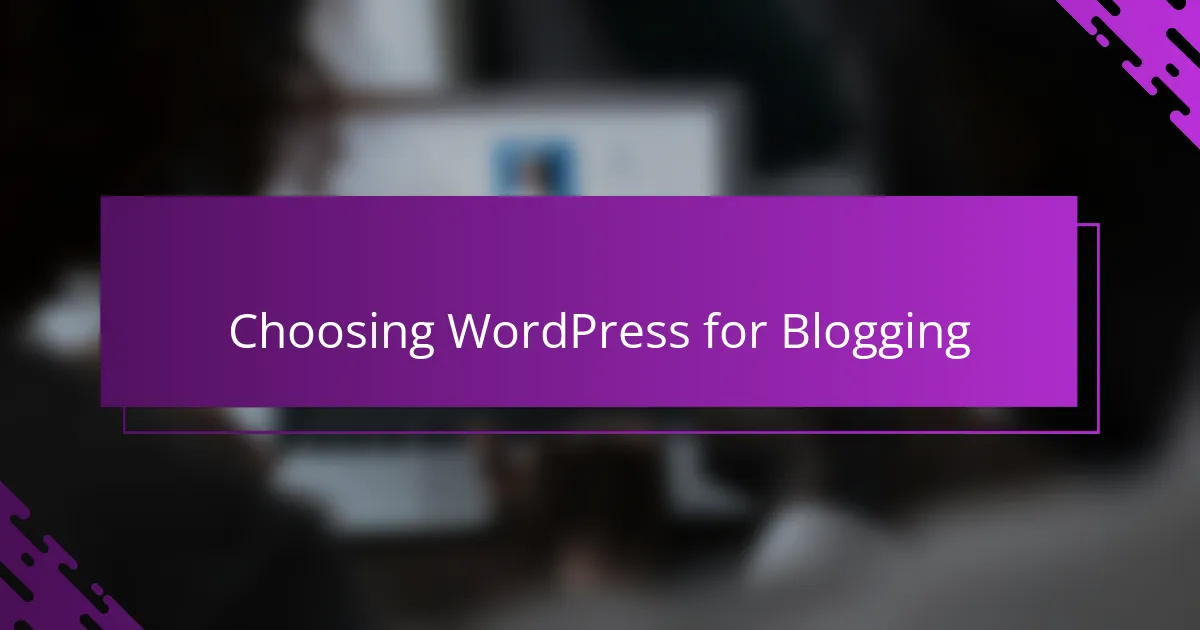
Choosing WordPress for Blogging
Choosing WordPress for my blog felt like a natural step because of its flexibility and ease of use. Have you ever tried a platform that promised a lot but ended up being frustrating? WordPress, on the other hand, offered me the freedom to customize without overwhelming me with complexity.
What really convinced me was seeing how many bloggers I admired trusted WordPress for their personal spaces. It gave me confidence that I wasn’t just picking a random tool but joining a community that values creativity and control. That sense of belonging was important to me, especially when I was just starting out.
From my experience, WordPress handles everything behind the scenes, so I can focus on writing. Isn’t it great when the technology fades away, and your ideas take center stage? For someone like me, who isn’t deeply technical, that simplicity made all the difference.
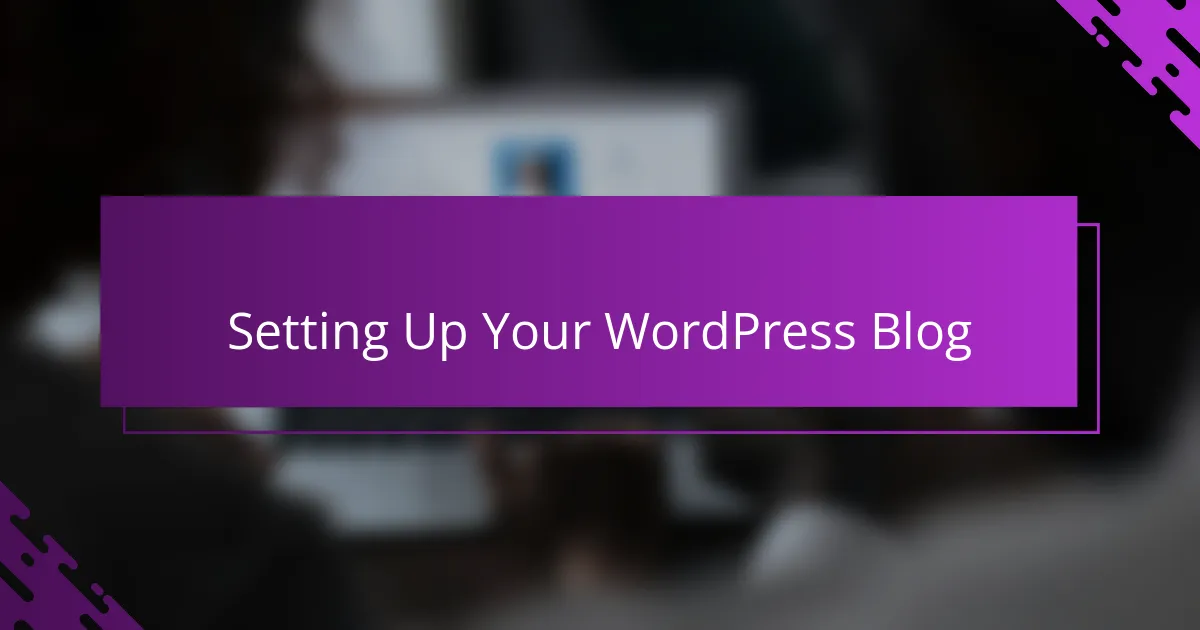
Setting Up Your WordPress Blog
Setting up my WordPress blog was surprisingly straightforward, but I still remember feeling a mix of excitement and nervousness as I clicked through the initial setup screens. Have you noticed how the right hosting choice can make or break your experience? For me, picking a reliable host was like laying a solid foundation—it saved me countless headaches down the road.
When it came to choosing a theme, I wanted something clean but personal, something that felt like me without screaming ‘template.’ I spent way more time than I expected browsing options, tweaking colors and fonts until it finally reflected my style. Don’t you find that little custom touches make a blog feel so much more inviting?
Installing essential plugins was another turning point. I started with the basics—SEO, backups, and a contact form—because I knew those tools would keep my blog running smoothly without distractions. It felt empowering to watch my site grow from a blank page into a functioning, welcoming space where my stories could live.
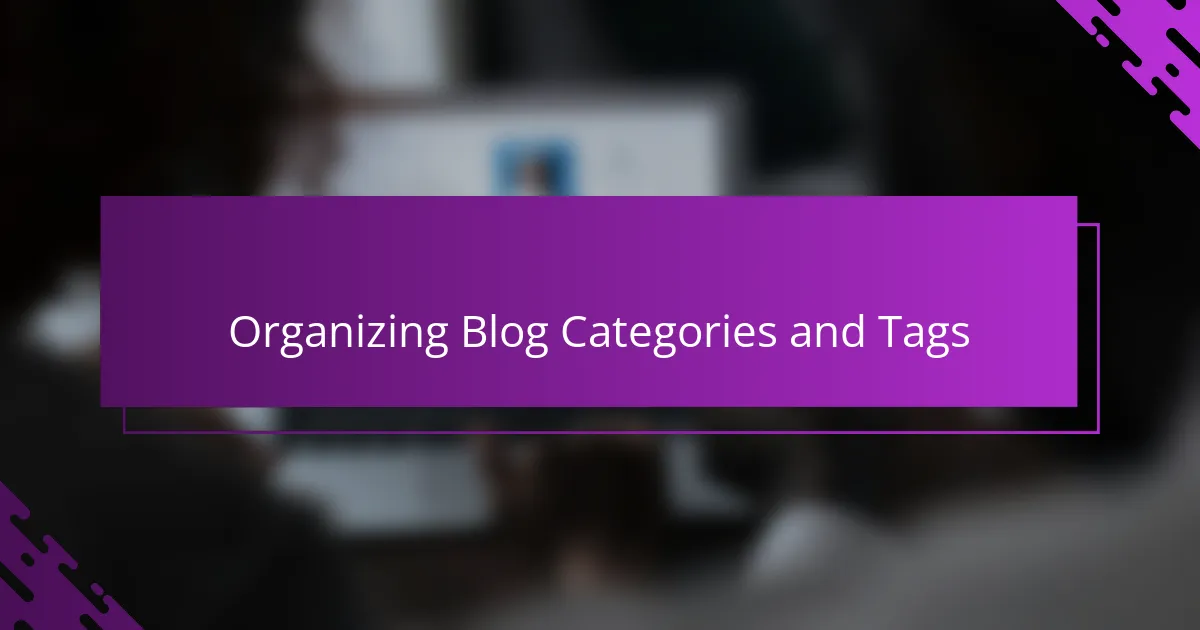
Organizing Blog Categories and Tags
When I first organized my blog categories, I realized that grouping similar topics not only helped me stay focused but made it easier for readers to find what interested them. Have you ever landed on a blog where everything felt jumbled together? For me, narrowing down categories to broad but clear themes reduced that confusion and gave my site a clean structure.
Tags, on the other hand, became my way to highlight specific ideas within those categories. It was like adding little signposts throughout my content, guiding readers to related posts without overwhelming them. I found that using tags sparingly—just enough to connect relevant topics—worked better than flooding each post with too many keywords.
What really changed the game was revisiting and refining these categories and tags over time. My interests evolved, and so did my blog’s focus, so keeping this structure flexible made organizing new content feel natural instead of like a chore. Don’t you think a well-organized blog reflects not just your stories but your growth as a writer?
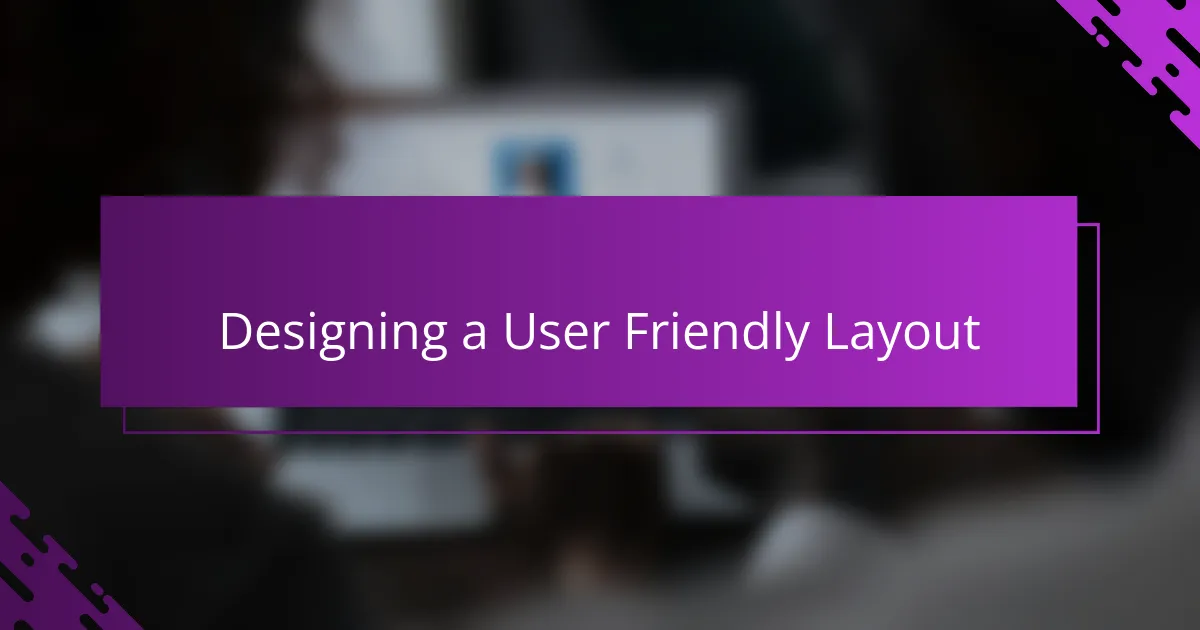
Designing a User Friendly Layout
Designing a user-friendly layout was a crucial step for me because I wanted visitors to feel comfortable and not lost the moment they landed on my blog. Have you ever clicked away from a site because everything felt cluttered or confusing? That was a big no for me, so I focused on clean navigation and clear sections that gently guide readers through my posts.
I remember spending hours experimenting with different menu styles, trying to strike a balance between simplicity and accessibility. What worked best was a straightforward top menu paired with a sidebar that highlighted recent posts and categories—small touches that made jumping from one topic to another effortless. It’s amazing how those tiny design decisions can make the whole experience smoother.
Colors and fonts also played a bigger role than I expected. Choosing soft tones and readable fonts wasn’t just about aesthetics; it created a calm atmosphere where my stories could shine without distractions. Doesn’t a pleasant design make you want to stay and explore more? For me, that subtle harmony between form and function became the heart of my blog’s layout.
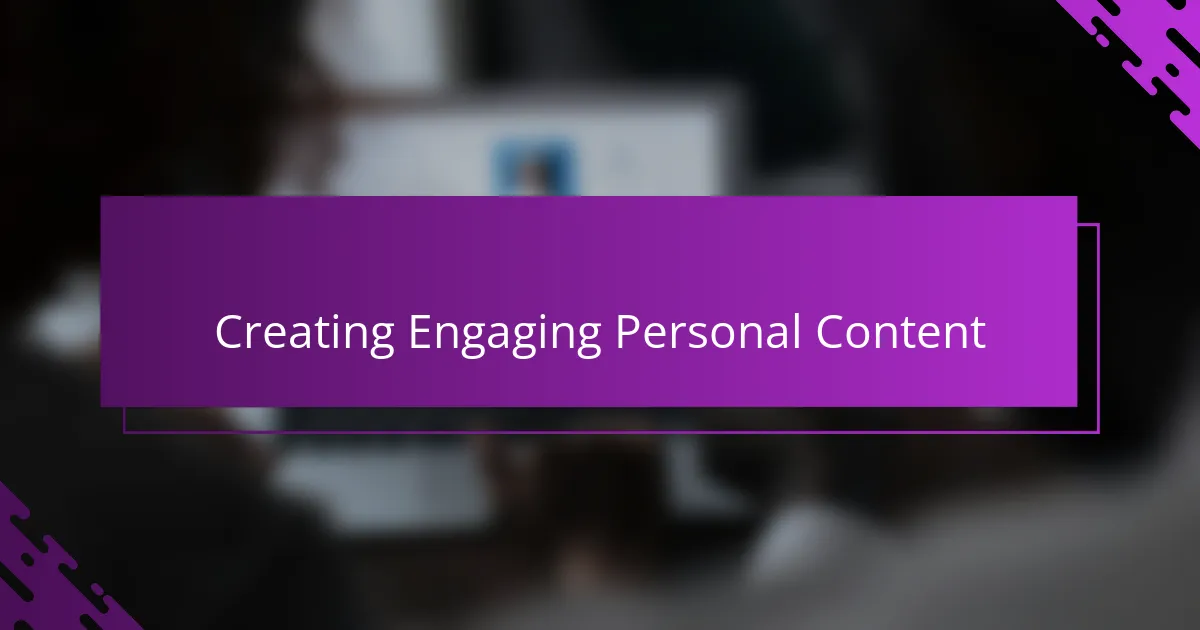
Creating Engaging Personal Content
Creating content that truly engages readers was one of the biggest challenges I faced when starting my blog. I quickly learned that being honest and vulnerable in my posts invited readers to connect with my experiences on a deeper level. Have you ever stumbled upon a story that felt so authentic it stuck with you? That’s the kind of connection I aimed for—and it made writing feel purposeful rather than just a task.
Another thing I discovered was the importance of storytelling within personal blogging. Instead of listing facts or events, I tried to weave my thoughts and feelings into narratives that felt relatable. For example, sharing a frustrating moment or a small victory gave my readers something to latch onto, making my content feel alive rather than flat. Isn’t it amazing how stories transform simple moments into memorable experiences?
I also found that mixing different types of content kept my blog fresh and engaging. From reflective essays to quick tips or even photo diaries, variety helped hold my readers’ attention and gave me space to express myself in multiple ways. Have you noticed how your own interests shift over time? Embracing that allowed my blog to evolve naturally, and my readers seemed to appreciate the genuine and dynamic flow.
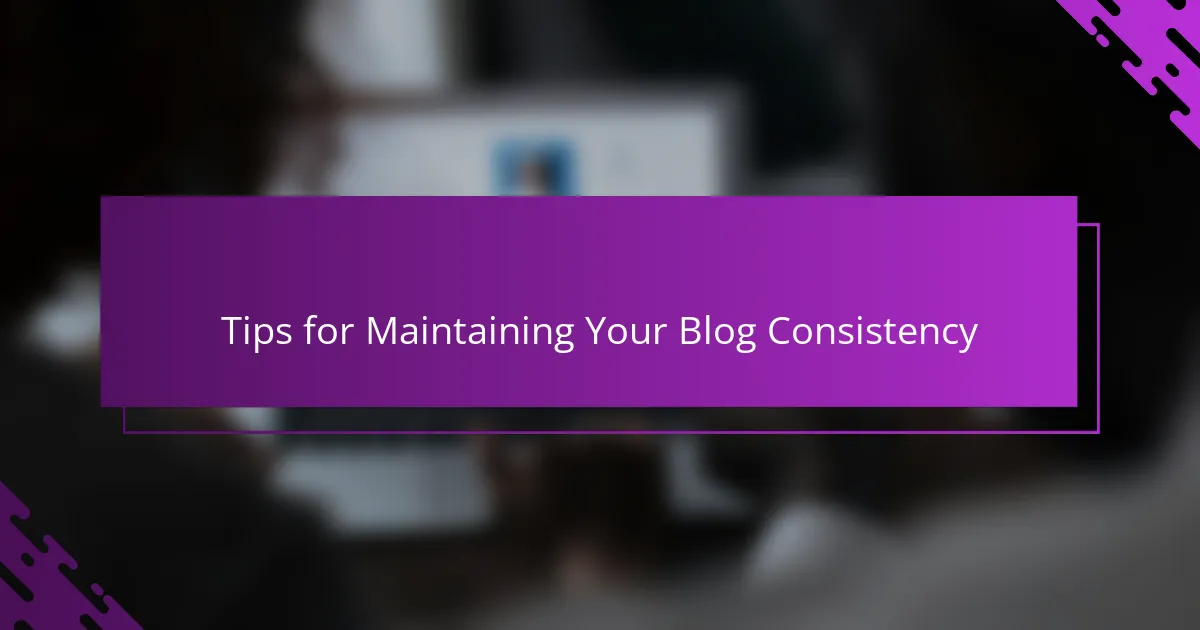
Tips for Maintaining Your Blog Consistency
Keeping a consistent blogging schedule was a game changer for me. I used to scramble for ideas and miss posting deadlines, which left me feeling frustrated. Have you ever noticed how setting aside specific days just for writing and planning not only eases the pressure but also keeps your creative energy flowing steadily?
Another tip I found invaluable is to prepare content in batches whenever inspiration strikes. There were weeks when ideas came flooding in, so I’d write multiple drafts ahead of time. That cushion of prepared posts gave me peace of mind during busy times, preventing those dreaded dry spells—don’t you think having a backup plan is a relief?
Lastly, I made it a habit to revisit my blog analytics and reader feedback regularly. Understanding what resonated helped me stay motivated and focused on topics my audience cared about. When you see your efforts connecting with real people, doesn’t it make the whole consistency journey feel more rewarding?
